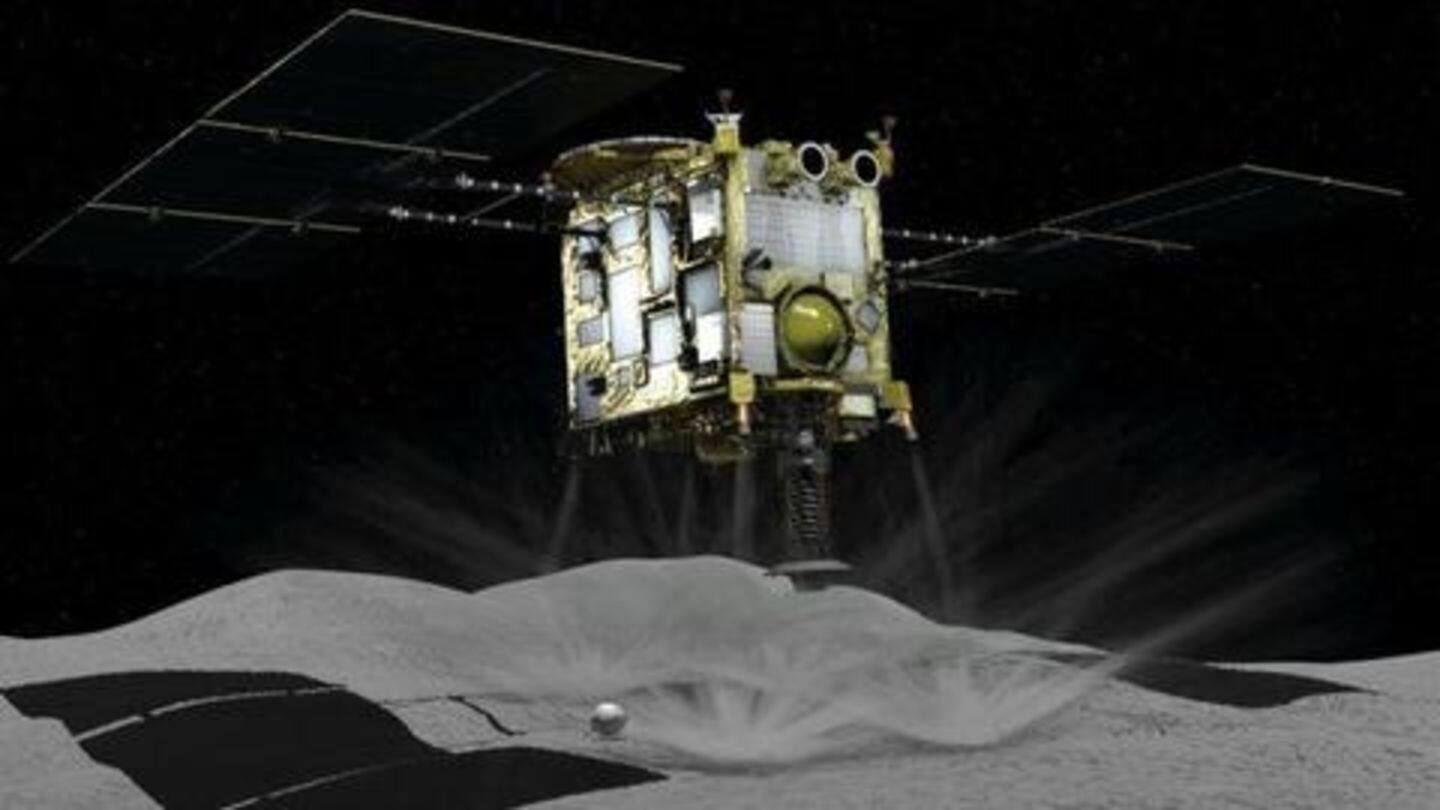
Japan lands probe on asteroid 300 million km from Earth
What's the story
On Friday, the Japan Space Exploration Agency (JAXA) announced that a probe, Hayabusa2, had successfully landed on an asteroid 300 million km from Earth. Notably, Hayabusa2 is the second Japanese spacecraft to land on an asteroid, after Hayabusa achieved a similar feat back in 2005. Samples collected by Hayabusa2 are expected to shed some light on the origins of life. Here are the details.
Do you know?
In 2005, Hayabusa had made history
In mid-September 2005, Hayabusa landed on the asteroid Itokawa, and managed to collect samples in the form of grains of asteroidal material. It returned to Earth with the samples in June 2010, thereby becoming the first spacecraft to return asteroid samples to Earth for analysis.
Rendezvous
Hayabusa2 rendezvoused with the asteroid after a three-and-a-half year journey
Hayabusa2 had lifted off from Earth in December 2014, and reached the asteroid, Ryugu, in June 2018 after a three-and-a-half year journey. Since it rendezvoused with the asteroid, Hayabusa2 has already delivered two rovers and a lander to its surface. However, landing Hayabusa2 on the asteroid proved to be far more challenging as the asteroid's surface was found to be rockier than initially anticipated.
Landing
Despite delays, Hayabusa2 managed a perfect landing
Owing to this difficulty, Hayabusa2's landing on Ryugu, scheduled for October 2018, had to be delayed. However, after four months of efforts, JAXA managed to identify an ideal spot for a landing, and achieved the same just before 2300hrs GMT on February 21 this year. Now that Hayabusa2 is on the asteroid, it will collect samples, and is expected to return to Earth in 2020.
Quote
Hayabusa2 managed to land under the best circumstances: JAXA
"We may have caused some worry due to the delay but we carried out our plan flawlessly over the past four months to bring it to a successful landing. It landed in the best circumstances among the scenarios we envisioned," said project manager Yuichi Tsuda.
Collection
Hayabusa2 will collect samples using bullets and explosives
For collecting samples, Hayabusa2 is using something called a sampler horn. It works like this: Hayabusa2 fires a 'bullet' made of metal tantalum into the asteroid's surface. The bullet, on impact, throws up particles which is then collected by the sampler horn. Later this year, JAXA plans to detonate an explosive charge on Ryugu's surface to create a crater and collect samples from it.
Significance
The significance of Hayabusa2's mission
So, what is the significance of the mission? Well, Ryugu is a C-type asteroid - a relic from the early days of the Solar System. Scientists think that C-type asteroids contain both organic matter, and trapped water, and might have been responsible for bringing both to Earth, thereby providing the planet with the materials necessary for life to originate.
Quote
Hayabusa2's mission will investigate the origins of life on Earth
"It's possible such asteroids [C-type] may have brought to Earth both the water and the organic material necessary for life to start. These samples [collected by Hayabusa2] will be crucial in investigating this possibility," Prof Alan Fitzsimmons, from Queen's University Belfast, told BBC.